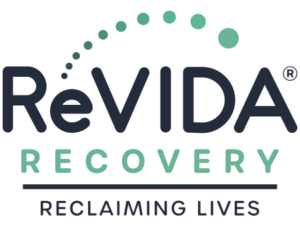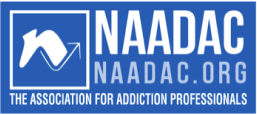
It’s no secret that fentanyl has become a problem – especially here in Appalachia, where 69% of all overdose deaths are caused by opioids. Undoubtedly, the scariest thing about fentanyl is its ability to hide. Dealers who mix fentanyl with other illicit substances, such as heroin or cocaine, are on the rise. Because fentanyl is 50-100x more powerful than other opioids, overdose is much more common when it’s involved. But fentanyl has no smell, it dissolves in liquid, and it has no taste. It seems like anyone who uses illicit drugs runs the risk of unknowingly ingesting fentanyl and overdosing.
At ReVIDA® Recovery, we know it can feel daunting to step away from opioids and into recovery. For those who aren’t ready for their recovery journey quite yet, we want you to learn how to use fentanyl test strips as soon as possible. Let’s talk about what these test strips do and how they can help.
Table of Contents
What Are Fentanyl Test Strips?
Fentanyl test strips are a way for anyone to test whether or not fentanyl is present in a substance – right from home. They’re easy to get and inexpensive. You can find them through your university health office, your Department of Health and Human Services (DHHS) for your county, most doctor’s offices, online through Amazon, and even at some local businesses like coffee shops or laundromats.
Up until recently, fentanyl test strips were still illegal in many states because they were considered to be drug paraphernalia. Thankfully, most states now allow the sale and purchasing of these strips because they fall under the umbrella of harm-reduction treatment strategies.
Steps on How to Property Use Fentanyl Test Strips
All tests can seem a little confusing at first, whether they’re Covid tests, pregnancy tests, or drug tests. The instruction manuals that come with tests aren’t always the best. Sometimes the font is too small or it’s written in a way that’s difficult to understand. It may be overwhelming to worry about whether or not you’re testing your substances correctly. Thankfully, you can use these 5 simple steps each time you test:
- Put a small amount of the substance you’re taking into a dry, clean container. The CDC recommends that you test around 10mg. If you are unsure of how much 10mg is, you can buy a small milligram scale online.
- Add ½ of a teaspoon of water (or a full teaspoon if you’re using methamphetamines) into the same container, and mix until dissolved.
- Take the wavy side of the test strip and place it face-down into the container with the substance and the water. Hold it there for 15 seconds.
- Take the strip out of the water and set it down on a desk or table (make sure it’s a flat surface) for 5 minutes.
- At the 5-minute mark, your test will be ready and you can read the results.
How to Read the Results
- A positive result will look like a single pink line on the left of your test strip. This means that there is fentanyl in your substance. If this is the case, the entire batch needs to be discarded. It may be tempting to use a small amount of the substance, especially if you’re managing withdrawal symptoms or if you don’t have the funding to buy a new batch. Resist this urge. You have no way of knowing exactly how much fentanyl has been mixed into the substance, and you risk a fentanyl overdose or nasty fentanyl side effects just by taking a small amount.
- A negative result will look like two pink lines on your strip. This means that there are no traces of fentanyl in your substance.
- An invalid result looks like one pink line on the right side (instead of on the left) or no lines at all.
The Effectiveness of Fentanyl Test Strips Detecting Substances
Fentanyl test strips are 97%-100% effective in detecting the presence of fentanyl. Not just one type of fentanyl, either – these strips can detect up to 10 types of fentanyl analogs.
Does Using Fentanyl Test Strips Help With Preventing Fentanyl Overdose
The entire point of fentanyl test strips is to prevent fentanyl overdose. They can only work if you decide to throw the batch away after noticing a positive result, however. We know this isn’t always easy. We also know how heavy it can be to manage something like fentanyl use disorder, and we want to help. We don’t want you to carry that weight alone.
If, for some reason, you’re unable to acquire fentanyl test strips before you decide to use an illicit substance, you’ll be risking an overdose. Especially in Appalachian communities, where fentanyl overdose mortality rates are higher than anywhere else in the country. It’s always smart to wait until you have test strips available before using any kind of illicit drug.
If you’re having a hard time finding last-minute test strips, try calling your local pharmacy. They may have some, and if they don’t, they can point you in the right direction.
Getting Treatment For Fentanyl And Other Substance Use Disorders
At ReVIDA® Recovery, we have seen firsthand how effective evidence-based substance use and fentanyl addiction treatment can be. It doesn’t matter how long you’ve been taking your substance of choice or how impossible it feels to stop right now – recovery is always possible. Let’s talk about some of the treatment options we offer here that could be right for you.
Medication-Assisted Treatment (MAT)
While you’re here for MAT, you’ll be closely monitored by a compassionate and knowledgeable staff. Medications are available that can help in alleviating fentanyl withdrawals and guiding you safely into recovery. You’ll also have access to resources that can help you on your journey moving forward, including individual counseling, group counseling, and support groups. In an MAT program, we use medications alongside traditional therapy to guide you away from opioids and into a healthy life of recovery.
You’ll also have the option to move forward with our outpatient treatment program. If a higher level of care is warranted, we will provide referrals for a local inpatient or residential treatment program. Your clinician will go over all of your options to set you up for success.
Suboxone® (Buprenorphine) Treatment
Medication-assisted treatment, or MAT, is a safe and evidence-based way to treat OUD. At ReVIDA® Recovery, we support the use of Suboxone® (buprenorphine) because it has been proven to reduce cravings while working to prevent relapse. To receive Suboxone® (buprenorphine) treatment, you will have to be opioid-free for 24 hours.
Outpatient Rehab Services
We believe that both individual and group therapy are critical components in the treatment of OUD – especially if you’re looking for long-term recovery. This is a safe and supportive space where you will learn how to manage your triggers and create healthy coping mechanisms. Our behavioral healthcare team is composed of licensed therapists, certified counselors, care coordinators, and peer recovery specialists who are standing by and ready to help. If we can treat your addiction where it started, at its roots, your chance of recovery is greater than if we were to simply treat your withdrawal symptoms.
At ReVIDA® Recovery, we’re standing by to help you reclaim your life from substance use disorder. Recovery is possible, and you can start your journey to wellness whenever you’re ready. To learn more or to schedule an appointment, please call us today at 423-631-0432.
FAQs About Fentanyl Test Strips
How are fentanyl test strips used?
Test strips can be dipped into a mixture of water and the substance of your choice.
How accurate are fentanyl test strips at detecting the substance?
Fentanyl test strips are 97%-100% effective in detecting the presence of fentanyl. Not just one type of fentanyl, either – these strips can detect up to 10 types of fentanyl analogs.
What does a positive fentanyl test strip look like?
If your substance is positive for fentanyl, you’ll see a single pink line on the left-hand side of your test strip.








